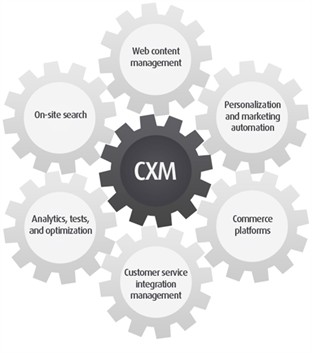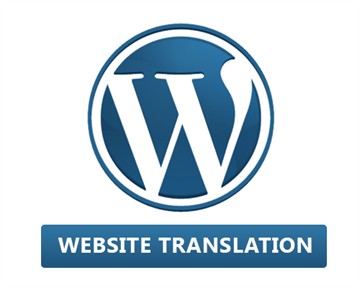WordPress CMS and Website Translation (Part 1)
Nowadays most people are familiar with the latest terms and buzzwords used to describe digital marketing solutions. But for those of you who may not have heard of them, the list includes: Web Experience Manager (WEM), Customer Experience Management (CXM), Customer Engagement Platform (CEP), digital experience layer, digital hub, and the list of in vogue names continue. But what do these words really mean?
At a fundamental level these terms all refer to some type of Content Management System (CMS). A CMS is a software package which is designed to provide a central interface for authoring, publishing, editing, tracking, modifying and managing the digital assets found on your websites, mobile applications, blogs, etc.

Traditionally a CMS’ responsibility was limited to manage documents and local computer files. However as CMS solutions have matured and with the advent of the Cloud and varying client devices (mobiles, tablets, pcs, etc.), the goal of a CMS has been completely re-shaped. The following are just a few of the benefits to be derived out of a modern-day Web Content Management System (or whichever buzzword you prefer):
- Web-based and globally accessible
- Manage your web-based assets and brands
- Tailoring customer experiences across multiple devices
- Optimizing online shopping
- Building engagements in various social channels
- Tracking conversions of multi-channel engagements.
In this first blog of the series, we begin our discussion by looking at the WordPress platform and what it offers to users. While it is certainly not my intent to cover every detail, I hope it will give you an idea of what’s involved and get you started along the process of selecting, configuring and deploying a web CMS.
Introducing WordPress
WordPress is a free and open source blogging tool and a content management system (CMS) based on PHP and MySQL. It’s is a scalable, robust and extensible application and provides a rich plug-in architecture and a template system. According CMS Usage Statistics provided by builtwith.com, WordPress is used by more than 51.0% of the top million websites as of December 2013. It is certainly the most popular blogging system in use on the Web.
It was first released on May 27, 2003, by its founders, Matt Mullenweg and Mike Little. The most recent version, 3.8 was released as a preview on 10 December 2013 and a stable version followed on 12 December. As of 17 December 2013, version 3.8 has been downloaded well over 2 million times.
Some of the great features of WordPress
Pricing
WordPress is an open source project. This means anyone is free to use the WordPress platform to create anything as simple as a personal blog to complex websites used by large multi-national companies without paying anyone a license fee for using the software package.
More specifically, WordPress is distributed under a license called the GNU General Public License (GPL) which is a very well-known license in the open source industry. The following table gives a high-level overview of some of your obligations under the GPL license:
| Can Do | This software can be used for commercial purposes in derivative works. |
| This software can be modified. | |
| The software may be distributed. | |
| You can place a warranty on the software | |
| Cannot Do | The software cannot be sublicensed. You must retain the original copyright and license |
| The software/license owner cannot be charged for damages. The software is released without warranty. | |
| Must Do | Copies of the original licensed software/instructions to obtain copies must be distributed with the software. |
| You must disclose your source code when you distribute the software. |
Note: This information is provided as is and should not be considered legal advice.

While there may be no cost associated with obtaining a WordPress license, there are still other ownerships costs associated with running your website. Some of these costs may include:
- Reliable Hosting
- UI/UX theme development (assuming stock WordPress themes do not meet your requirements)
- Back-end development (includes purchasing plugins or custom development. e.g. integrating with other systems)
- Translations (if you plan on supporting markets in different languages and locales)
Themes
A WordPress theme is a collection of resources (template files, image files – jpg, png, etc., style sheets, JavaScript, or any other files) which help change the look & feel (UI experience) and core design functionality of your WordPress powered website. The theme acts as a shell for your website and can be customized to fit your needs.
The WordPress architecture (the way it was implemented) makes it possible to change the appearance of the website (the UI visitors see when they go to your web address) without affecting the structure, workflows and management of your content. Website administrators may install and switch between themes as required.
There are lots of WordPress themes available for download on template design websites. While some are free there are premium (paid for) templates as well.
Plugins
Plugins are the heart of WordPress. They allow developers to extend the core WordPress functionality to achieve anything you can imagine. One very popular feature of WordPress is its plugin architecture which allows users and developers to extend its abilities beyond the core installation. The WordPress plugin directory contains a database of well over 28,000 plugins each offering custom features and allowing users to tailor WordPress to meet their specific needs. Examples of customization offered by WordPress plugins include but are not limited to Social Media sharing/integration (Facebook, Twitter, Google+, etc.), security features (malware scanning), SEO (Search Engine Optimization) and e-Commerce just to name a few.
Just like templates, plugins can either be free or premium (paid for).
Community
Being an open-source product, WordPress has its own community of users, designers, developers and WordPress specialists. You can use the WordPress forums to seek answers to any of your questions/challenges and even feature requests.
WordPress as a Content Management System
Despite WordPress’ great feature set, robustness, scalability and impressive reference list, WordPress is still viewed more as a blogging platform rather than a Content Management System (CMS). As such WordPress is usually not part of the short-listed platforms some organizations evaluate during their CMS selection process.
On the other hand, there is another school of thought which believes WordPress is sufficient enough to meet most needs as a CMS. Usually these are for small websites, basic ecommerce and micro-sites.
The following lists some considerations you should keep in mind when to determine if WordPress will be a best fit for your next project:
|
Pro |
Con |
| Very active and responsive community of experts | Managing frequent upgrades |
| Simple UI easy to learn | Upgrades can break plugins used on the website |
| Admin UI be easily translated into multiple languages | No digital marketing tools |
| Tried and proven with impressive references | No fine-grained permission control |
| Thousands of themes for quick mockups | No fine-grained workflows for managing content |
| Thousands of plugins to provide extensibility | |
| Very affordable hosting plans available |
In summary, a thorough walkthrough of these pro and cons in addition to fully understanding your requirements are critical in determine if the WordPress platform will be a best fit for your project.
GPI Resources on Multilingual CMS and Connectors
GPI offers custom CMS translation services connectors to a variety of web content management systems and client relationship management systems in order to streamline localization workflows and access to translation project information across your enterprise. For more information, check Multilingual CMS Translation Connectors.
